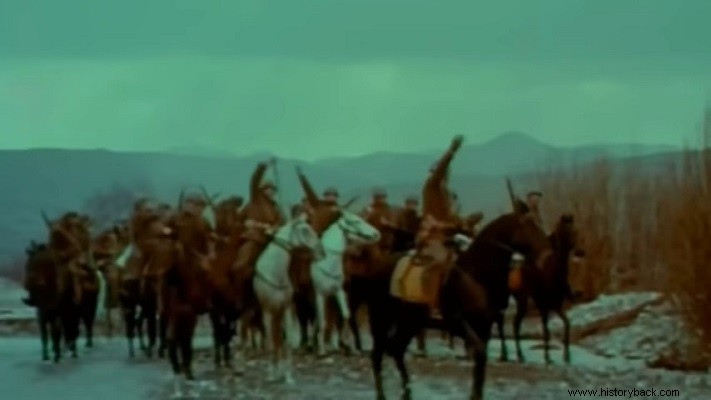
The Greek cavalry played a catalytic role in the 1941 war against the Italians and the Germans. Although few Greek horsemen were well trained and one would dare call them elite.
The main formation was the Cavalry Division (MI) to which belonged the Cavalry Brigade (TI) which for a time acted as an independent formation. At the same time, there were five Army Corps Reconnaissance Groups (OCRs), one for each corps (A, B, C, D, E) and 15 divisional Reconnaissance Groups with the same Latin numbering as the relevant Infantry Division (MI).
MI had the 1st and 3rd Cavalry Regiments (SI) and the Motorized SI (MK/SI) . Each regiment had four iles, a Mounted Machine Gun Company (EIP 12 machine guns) and an Olmon Company (4 81mm mortars). The MI also had a Mounted Machine Gun Squadron with three EIPs (36 machine guns) and a battle tank.
The Motorized Cavalry Regiment (M/K SI) had 44 Mercedes Benz W 152 4×4 vehicles, 44 Mercedes Benz LG 2500 6×6 vehicles and 75 2.5 ton FIAT trucks and number of motorcycles. Its organization was the same as the cavalry regiments, except that one of Ili's was called Elafra Ili.
The OASS had two islands each , an EIP with 12 machine guns and a mortar shell with two 81 mm mortars. The OA of the MPs each had two maneuver islands and a Machine Gun Squad (4 machine guns). In total there were 48 mounted and four motorized iles, 11 NTUA, 15 Machine Guns (192 machine guns in total), 3 Mortars (12 mortars) and 5 Mortars (10 mortars).
In terms of organic artillery MI had a Mounted Artillery Squadron with two 75mm guns. (8 guns in total) and a motorized artillery with 75mm Skoda guns. (4 guns transported by cars).
In terms of anti-aircraft artillery the MI had a mixed Squadron with a 37mm artillery. (4 guns), two 20 mm artillery pieces. (with 4 guns each) and a mounted artillery of 20 mm. Finally, MI had one Engineer island and two Transmission islands.
Cavalry regiments were comparable in strength to infantry battalions but superior to the latter in firepower thanks to their mortars. The horsemen carried heavy rifles and swords and were trained to fight on horseback as well as on foot. The 2nd SI did not have horses and fought as a joint infantry battalion at Krusia in 1941 against the Germans.
Cavalry in battle
The cavalry fought the invaders from the start. The TI under colonel Sokratis Dimaratos with the 1st SI, Elafra Ili and the Skoda motorized artillery acted exceptionally well in Pindos. Reinforced with infantry divisions, she contributed the most to stopping the Italian Alpinists of "Julia". The B' OA also performed exceptionally well of lieutenant colonel Filopimena Kokkinos .
This was followed by the mission of MI to Pindos. The MI, under Major General Georgios Stanotas, an extremely experienced horseman and hero of Asia Minor , it also performed exceptionally well in the Greek counter-attack phase against the Italians, commanding the 3rd SI and the MK/SI. The battle of the 1st Commandery of the 3rd SI together with the Ao Detachment under the heroically fallen lieutenant colonel Frizis, in the village of Armata, deserves special mention.
There the Italian 8th Mountaineer Regiment was sorely tested. The Ili of the Second OA operated in Pindos, included in the I MP under Ilarch Georgiadis as well as the IX and the X OA . The IX OA particularly distinguished itself in the battle in the village of Pournia, while a group of the same OA alone, without waiting for the infantry, occupied the Tsobani hill in Smolika, capturing 60 prisoners.
X OA distinguished itself in the phase of chasing the Italians. Subsequently, the MI, with the TI now included in it, assumed liaison duties between the MPs of the Greek Army advancing on the Northern Continent. The MI was withdrawn from the front line and formed the reserve of the commander-in-chief. After all, the weather conditions did not allow her involvement.
During the German invasion the cavalry was there again. The action of MI will be covered in another publication, however. The XIX Motorized Division. also acted against the Germans
